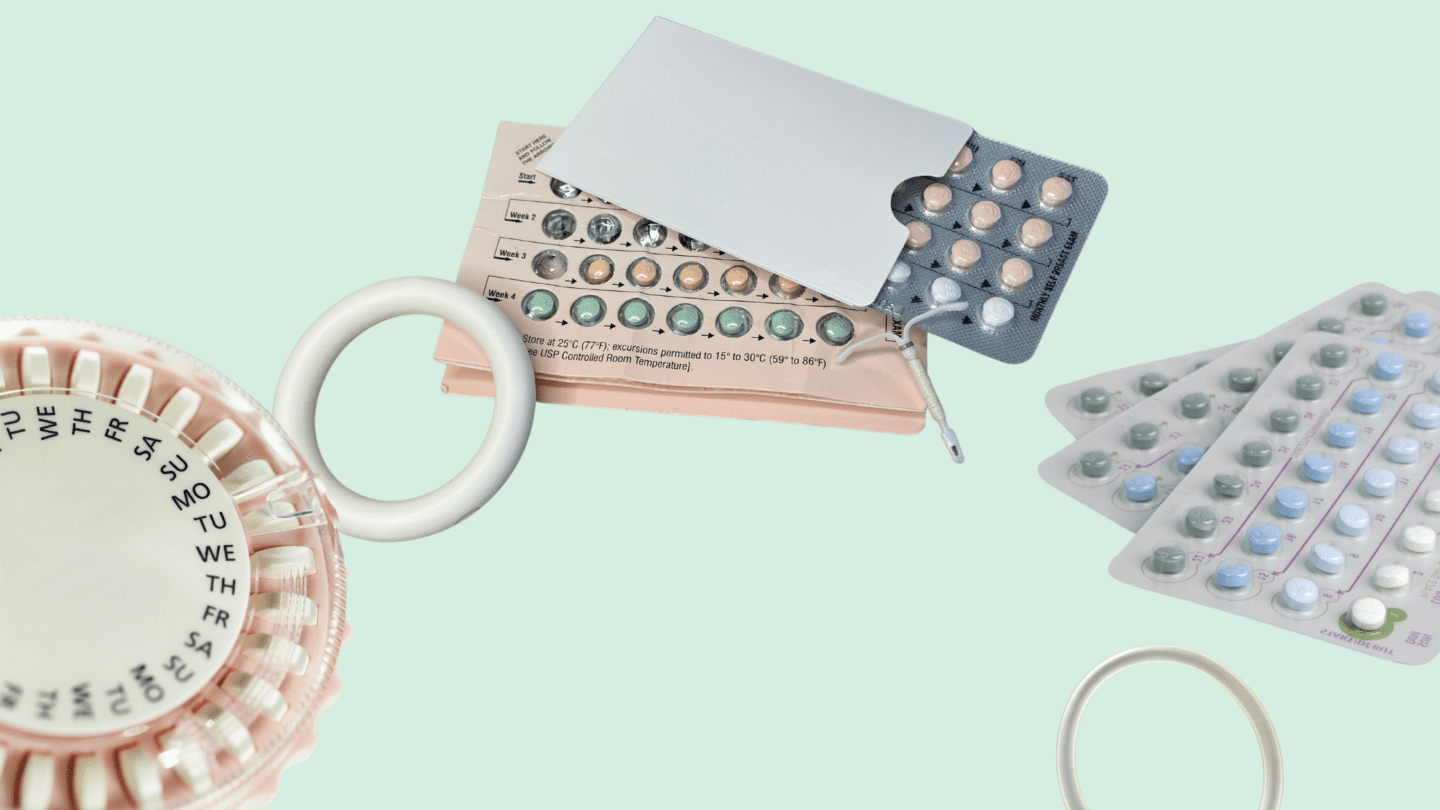We’ve heard from countless users who felt like their just wasn’t right for them and wanted to give it up. Some worry about long-term consequences from adding hormones to their bodies, while others consider the very real (though rare) medical complications from .
Only you can decide whether or not is right for you. At adyn, our mission is to give you the information you need to make an informed decision about the pros and cons of . Far too many people still don’t have accurate information about what is and what it does. Part of that uncertainty stems from a decades-old medical research bias toward male bodies,1 paired with the complexity of human biology. isn’t always simple, but there are some things we can say with certainty.
Birth control isn’t bad for you, but it’s not hard to see why it can seem that way. Birth control pills and other options carry a laundry list of potential side effects, from headaches to heavy bleeding. However, research still consistently finds that is safe.
Is safe long-term?
Fortunately, research has grown in recent years. The overwhelming consensus from the scientific literature is that is generally safe and effective.2 Research shows that doesn’t have any long-term effects on fertility or health.3
And while side effects can be significant for some people, it doesn’t have to be that way. When it comes to finding the best , the key is knowing the right option for your body. Common side effects like mood swings or headaches aren’t a given. You can find a option that might actually be beneficial beyond preventing pregnancy.
Does affect your hormones?
Hormonal options like the pill and s (IUDs) like Mirena deliver the sex hormones and . The and in mimic things that happen during pregnancy, preventing eggs from releasing or implanting in the .4 Your body dials back production of these hormones when you’re taking , so you never have “too much” of them.5
One of the ways helps with things like mood swings and irregular bleeding is by smoothing out, though not entirely eliminating,6 the normal hormonal swings that happen during your menstrual cycle.5 Removing those hormonal spikes and dips can alleviate the side effects that can come with having a menstrual cycle.
Pregnancy after the pill: Does affect long-term fertility?
Obviously, affects your fertility while you’re taking it. Many users worry that it will continue having an impact if they ultimately decide to try and get pregnant. Numerous studies following people who took, and then stopped taking show there are no long-term effects on fertility from taking .
One large review study from 2018 summarized the findings from 22 studies looking at whether affected fertility long-term. Overall, the review study found 83 percent of people taking got pregnant within 12 months of stopping , which is about in line with normal rates.3 Taking even for longer periods of time didn’t appear to affect fertility, either7 (and in fact may actually increase the odds of conceiving).8
Numerous studies following people who took, and then stopped taking show there are no long-term effects on fertility from taking .
It can take a few months for fertility to return to normal levels after stopping . Some methods, like the shot, or Depo-Provera, might delay your fertility by a little bit more than others.9 But there’s no evidence that using causes long-term .
Birth control side effects
Hormonal can have side effects — but they’re not all bad. After starting a new form of , you might experience headaches, painful or heavier periods, and other things.10
Confusingly, most kinds of also often help with these things. The pill, patch, ring, IUD, and other methods can reduce or even completely eliminate or painful periods.11 In fact, some forms of are specifically approved by the FDA for treating acne12 or heavy bleeding.13 So what’s actually happening here?
Like what you’re reading? Get the latest straight to your inbox 💌
The hormones in are versions of the same ones your body makes during your menstrual cycle. Those hormones, whether made by your body or delivered by , play an important role in the processes that cause things like acne14 or painful periods.15 Our bodies are complex, and they respond differently to different kinds and amounts of hormones. So, one person might find relief from period cramps after starting because it’s helping even out their natural swings in hormones, while another person might feel destabilized by those same hormones.
We also know that some side effects, like weight gain, are only associated with certain forms of . The topic certainly needs more research, and people’s lived experiences can vary, but the research right now shows only the shot and the implant can cause weight gain, and only in certain people.16-17
Overall, finding the right for your body is key. The right can maximize positive side effects — like cutting out acne — while minimizing the bad ones.
Is adyn right for you? Take the quiz.
Birth control risks
Hormonal does come with more serious risks, but the odds are quite low. The most common serious risk is a slight increase in the chances of developing potentially dangerous blood clots. These can form in the deep veins of your body or potentially break loose and cause a blockage elsewhere, like in the lungs.18
The risks of causing blood clots are still really small. People using still have less than a 1 percent chance of getting a blood clot in any given year.19 The type of matters, too. Options with , like the combined pill or patch, raise your risk of blood clots much more than options with just progestin-only pills.20 A family history of blood clots, smoking, being overweight, and other factors can also make blood clots more likely21 — so you may want to opt for progestin-only pills if you have any of those risk factors.
Birth control can also slightly increase the risk of some kinds of cancer, including liver cancer, breast cancer, and cervical cancer. However, those risks go away within about five years of stopping . But also decreases the risk of ovarian cancer, colorectal, and endometrial cancer, meaning it doesn’t really affect the overall risk of cancer in general.22
Birth control also decreases the risk of ovarian cancer, colorectal, and endometrial cancer, meaning it doesn’t really affect the overall risk of cancer in general.
Some small studies also show can reduce your body’s uptake of certain vitamins, like vitamin B6,23 and minerals like zinc.24 Many of these studies are old, but the evidence we do have says there’s no reason to worry about nutritional deficiencies while taking as long as you’re eating a healthy diet.25 Some studies also show that can slightly reduce bone density,26 though we need bigger, better studies to know how impactful that effect actually is.
The health benefits of
Hormonal can bring a lot of benefits, even beyond preventing unwanted pregnancy. More than half of hormonal contraceptive users also use their for something that’s not stopping pregnancy, according to a study from the Guttmacher Institute.27 That includes controlling heavy bleeding, reducing painful periods, helping symptoms of premenstrual dysphoric disorder (PMDD), and even controlling acne.11
Birth control can even help with more serious medical complications like , which can be painful and even harmful.
Birth control can help with:11,28
- Acne
- Painful periods
- Heavy periods
- Irregular periods
- Mood regulation
- Endometriosis
- Migraines
- Fibroids
- Ovarian cysts
- PMDD
Preventing pregnancies is also something that’s really important to many people, and in a way that’s hard to quantify. Having the freedom to control your decisions around your body and have a family – or not – is a basic right that everyone deserves. , in its many forms, is essential to that right.
Finding the right for you
Sometimes starting a new can feel pretty bad. Annoying side effects can make you feel downright awful and maybe make you wonder if what you’re doing is okay for your body. What’s far more likely is that you’re simply not using the right for your body. Everyone’s biology is different, and most people will need to find the that works best for them.
Remember, most options can also help with many of the symptoms they can cause. Biology is complex, but know that shouldn’t be something that’s dragging you down. You can switch options at any time.
Discover how adyn can help you find the best for your biology.
-
- Merone, L., Tsey, K., Russell, D., & Nagle, C. (2021). Sex and gender gaps in medicine and the androcentric history of medical research. Australian and New Zealand journal of public health, 45(5), 424–426. https://doi.org/10.1111/1753-6405.13139
- Teal, S., & Edelman, A. (2021). Contraception Selection, Effectiveness, and Adverse Effects: A Review. JAMA, 326(24), 2507–2518. https://doi.org/10.1001/jama.2021.21392
- Girum, T., & Wasie, A. (2018). Return of fertility after discontinuation of contraception: a systematic review and meta-analysis. Contraception and reproductive medicine, 3, 9. https://doi.org/10.1186/s40834-018-0064-y
- Danielle B. Cooper; Preeti Patel. (2024). Oral Contraceptive Pills. StatPearls. https://www.ncbi.nlm.nih.gov/books/NBK430882/#article-26256.s3
- Fleischman, D. S., Navarrete, C. D., & Fessler, D. M. (2010). Oral contraceptives suppress ovarian hormone production. Psychological science, 21(5), 750–753. https://doi.org/10.1177/0956797610368062. Full text.
- Rodriguez, L. A., 2nd, Casey, E., Crossley, E., Williams, N., & Dhaher, Y. Y. (2024). The hormonal profile in women using oral contraceptives is not as stable as previously thought: a temporal analysis of serum endogenous and exogenous hormones. American journal of physiology: Endocrinology and metabolism. https://doi.org/10.1152/ajpendo.00418.2023
- Mikkelsen, E. M., Riis, A. H., Wise, L. A., Hatch, E. E., Rothman, K. J., & Sørensen, H. T. (2013). Pre-gravid oral contraceptive use and time to pregnancy: a Danish prospective cohort study. Human reproduction (Oxford, England), 28(5), 1398–1405. https://doi.org/10.1093/humrep/det023
- Farrow, A., Hull, M. G., Northstone, K., Taylor, H., Ford, W. C., & Golding, J. (2002). Prolonged use of oral contraception before a planned pregnancy is associated with a decreased risk of delayed conception. Human reproduction (Oxford, England), 17(10), 2754–2761. https://doi.org/10.1093/humrep/17.10.2754
- Damtie, Y., Kefale, B., Arefaynie, M., Yalew, M., & Adane, B. (2023). Fertility return after hormonal contraceptive discontinuation and associated factors among women attended Family Guidance Association of Ethiopia Dessie model clinic, Northeast Ethiopia: A cross-sectional study. PloS one, 18(7), e0287440. https://doi.org/10.1371/journal.pone.0287440
- Barr, Nancy Grossman. (2010) “Managing adverse effects of hormonal contraceptives.” American Family Physician 82.12 1499-1506. https://www.aafp.org/pubs/afp/issues/2010/1215/p1499.html
- Schindler A. E. (2013). Non-contraceptive benefits of oral hormonal contraceptives. International journal of endocrinology and metabolism, 11(1), 41–47. https://doi.org/10.5812/ijem.4158
- FDA. (May 2023). Highlights of prescribing information: Yaz. https://www.accessdata.fda.gov/drugsatfda_docs/label/2023/021676s020lbl.pdf
- FDA. (Aug 2022). Highlights of prescribing information: Mirena. https://www.accessdata.fda.gov/drugsatfda_docs/label/2022/021225s043lbl.pdf
- Tyler, K. H., & Zirwas, M. J. (2013). Contraception and the dermatologist. Journal of the American Academy of Dermatology, 68(6), 1022–1029. https://doi.org/10.1016/j.jaad.2012.11.018. Full text.
- FItani, R., Soubra, L., Karout, S., Rahme, D., Karout, L., & Khojah, H. M. J. (2022). Primary Dysmenorrhea: Pathophysiology, Diagnosis, and Treatment Updates. Korean journal of family medicine, 43(2), 101–108. https://doi.org/10.4082/kjfm.21.0103
- Berenson AB, Wiemann CM, Rickerr VI, McCombs SL. (1997 ) Contraceptive outcomes among adolescents prescribed Norplant implants versus oral contraceptives after one year of use. Am J Obstet Gynecol. Mar;176(3):586-92. https://doi.org/10.1016/s0002-9378(97)70552-0
- Nault AM, Peipert JF, Zhao Q, Madden T, Secura GM. (2013) Validity of perceived weight gain in women using long-acting reversible contraception and depot medroxyprogesterone acetate. Am J Obstet Gynecol. Jan;208(1):48.e1-8. doi: 10.1016/j.ajog.2012.10.876. https://www.ncbi.nlm.nih.gov/pmc/articles/PMC3974101/
- U.S. National Library of Medicine. (n.d.). Blood clots | hypercoagulability. MedlinePlus. https://medlineplus.gov/bloodclots.html
- de Bastos M, Stegeman BH, Rosendaal FR, Van Hylckama Vlieg A, Helmerhorst FM, Stijnen T, Dekkers OM. (2014) Combined oral contraceptives: venous thrombosis. Cochrane Database of Systematic Reviews Issue 3. DOI: 10.1002/14651858.CD010813.pub2.
- Trenor CC 3rd, Chung RJ, Michelson AD, Neufeld EJ, Gordon CM, Laufer MR, Emans SJ. (2011) Hormonal contraception and thrombotic risk: a multidisciplinary approach. Pediatrics. Feb;127(2):347-57. doi: 10.1542/peds.2010-2221. Epub 2011 Jan 3.
- Anderson FA Jr, Spencer FA. (2003) Risk factors for venous thromboembolism. Circulation. Jun 17;107(23 Suppl 1):I9-16. https://doi.org/10.1161/01.cir.0000078469.07362.e6
- Iversen, L., Sivasubramaniam, S., Lee, A. J., Fielding, S., & Hannaford, P. C. (2017). Lifetime cancer risk and combined oral contraceptives: the Royal College of General Practitioners’ Oral Contraception Study. American journal of obstetrics and gynecology, 216(6), 580.e1–580.e9. https://doi.org/10.1016/j.ajog.2017.02.002
- Morris MS, Picciano MF, Jacques PF, Selhub J. (2008) Plasma pyridoxal 5′-phosphate in the US population: the National Health and Nutrition Examination Survey, 2003-2004. Am J Clin Nutr. 2008;87(5):1446-1454. https://doi.org/10.1093/ajcn/87.5.1446
- Fallah S, Sani FV, Firoozrai M. (2009) Effect of contraceptive pill on the selenium and zinc status of healthy subjects. Contraception. 2009;80(1):40-43. https://doi.org/10.1016/j.contraception.2009.01.010
- King, J. C. (1977). Nutrition during oral contraceptive treatment. Journal of Nurse-Midwifery, 22(1), 31–32. https://doi.org/10.1016/0091-2182(77)90100-8
- Jackowski, S. A., Baxter-Jones, A. D. G., McLardy, A. J., Pierson, R. A., & Rodgers, C. D. (2015). The associations of exposure to combined hormonal contraceptive use on bone mineral content and areal bone mineral density accrual from adolescence to young adulthood: A longitudinal study. Bone reports, 5, e333–e341. https://doi.org/10.1016/j.bonr.2015.06.001
- Jones, Rachel. (2011). Beyond Birth Control: The Overlooked Benefits Of Oral Contraceptive Pills. Guttmacher Institute. https://www.guttmacher.org/sites/default/files/report_pdf/beyond-birth-control.pdf?utm_source=baytoday.ca&utm_campaign=baytoday.ca%3A%20outbound&utm_medium=referral
- Ross, R. K., Pike, M. C., Vessey, M. P., Bull, D., Yeates, D., & Casagrande, J. T. (1986). Risk factors for uterine fibroids: reduced risk associated with oral contraceptives. British medical journal (Clinical research ed.), 293(6543), 359–362. https://doi.org/10.1136/bmj.293.6543.359








